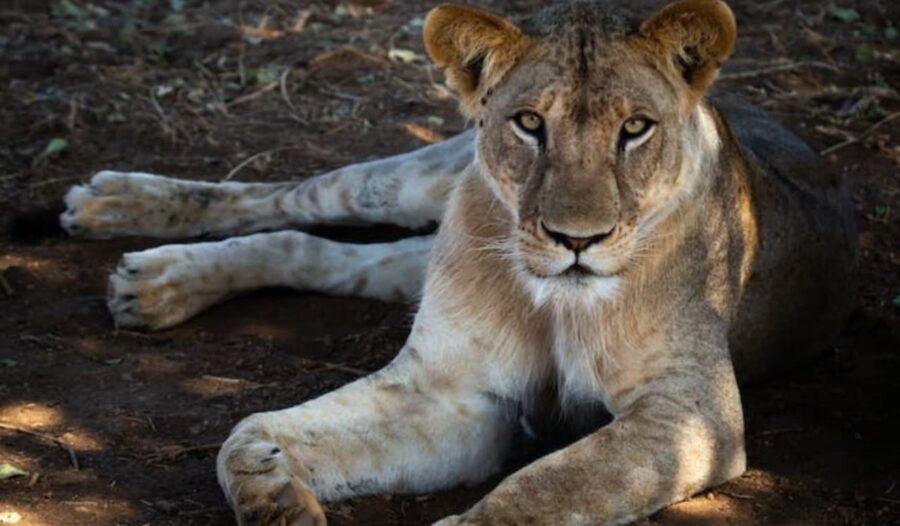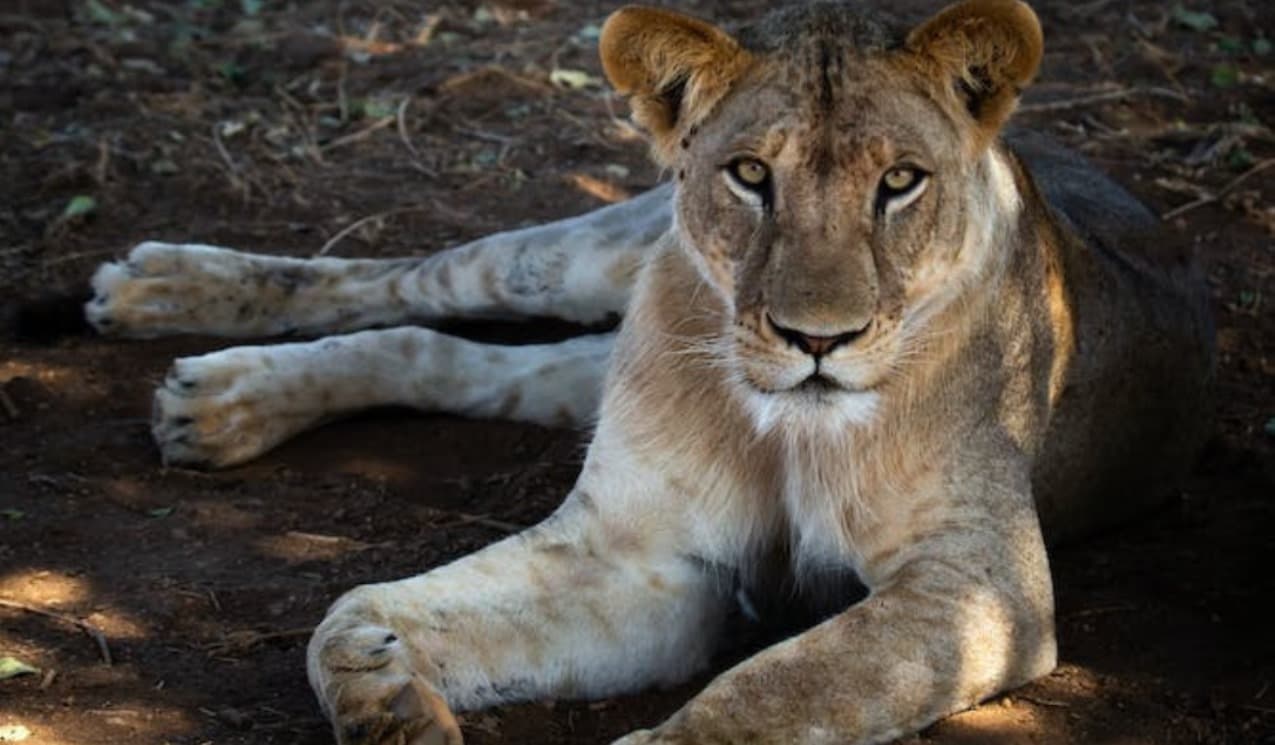
Lion farming in South Africa: fresh evidence adds weight to fears of link with illegal bone trade
South Africa’s legal commercial lion industry is helping to act as a cover for the illegal international big cat bone trade.

In South Africa an estimated 8,000 lions are bred and kept in captivity for commercial purposes in more than 350 facilities. This is far more than the country’s wild population, estimated at 3,500 individuals.
These big cats are exploited in a variety of different ways including interactive cub “petting” tourism, “canned” trophy hunting (where the lions are hunted in small enclosures with no chance of escape), live exports, and the supply of body parts for use in traditional medicine.
Despite ongoing controversy surrounding this industry – in particular, related to reports of animal cruelty and risks to public health – the commercial captive breeding and canned hunting of lions in South Africa is still legal.
By contrast, the export of lion bones, claws, skulls, and teeth originating from lion farms is currently illegal. This follows a high court declaration in 2019 in which the lion bone export quota was declared unconstitutional. Subsequently, no official CITES export quotas for lion skeletons have been set.
We are wildlife researchers who have been focused on various aspects of South Africa’s commercial captive lion industry including its potential impacts, how it is being regulated, and what may be influencing consumer demand.
We also work with World Animal Protection, an animal protection organisation, that has released a new report on the industry, which we contributed to. The report adds credence to pre-existing concerns about how some of these types of facilities operate.
Specifically, some are using legal activities – like captive breeding and canned hunting – to fuel (and potentially cover) their involvement in the illegal international big cat bone trade. Lion bones are sought after for use in traditional medicine.
This finding adds more weight to various reports about the illegal trade in lion bones over the years.
A nexus of legal and illegal trade
Many of South Africa’s captive lion facilities are open to the public who pay to see and have direct contact with the big cats. However, others are situated in remote locations and operate ‘off grid’. They are closed to the public.
As part of our ongoing research into this industry, in late 2022, we received disturbing intelligence from anonymous sources employed by some of these ‘off grid’ lion farms. This information formed the basis of the new World Animal Protection report.
When dealing with issues involving wildlife and illegality, researchers often rely on sources whose identities must be kept hidden for their own protection. Recent studies carried out in this way include those focused on the illegal killing, processing, and trade of jaguar parts in South America.
The South African sources told us about the involvement of captive lion facilities in the international big cat bone trade. Essentially, there’s a well-established and effective legal operation which is plugged into an illicit trade network.
Whereas after a canned trophy hunt the skin, paws, and skull of lions are prized trophies by hunters, the lion’s bones are coveted by illegal wildlife traffickers.
In some cases, entire carcasses are left intact and are packed into cardboard boxes ready for shipment and for Asian bone buyers to collect. The reason this is done is to certify authenticity (that it is a lion carcass) and ensure tracking devices have not been inserted into the bones.
Sources also described how these facilities use various tools and tactics, such as security cameras, patrols and messaging apps to avoid detection during inspections.
A way forward
The fact that the commercial captive lion bone trade in South Africa is juxtaposed within a network of dealers that operate both legally and illegally is nothing new. In fact, illegal and unethical activities associated with the industry were a contributing factor which led a team of relevant experts (including traditional leaders, lion farmers and scientists) to conclude in a report released in 2020 that it was “tarnishing the country’s reputation with political and economic risks”.
Consequently, the South African Government announced its intention, with the cabinet’s approval, to immediately halt the “domestication and exploitation of lions, and to ultimately close all captive lion facilities in South Africa”. But nothing has changed so far. The captive breeding and canned hunting of lions has continued.
Also read: Lions are still being farmed in South Africa for hunters and tourism
Moreover, in late 2022, a ministerial task team was asked to “develop and implement a voluntary exit strategy and pathways for captive lion facilities”. This raised serious questions about whether the government was wavering in its stated intention to shut down commercial captive lion breeding.
But given the intertwined legal and illegal aspects of this industry, it is highly doubtful whether a voluntary phasing out of the industry will be enough to stop the commercial exploitation of lions in South Africa.
Instead, there should be a strategy which includes a mandatory time-bound termination of the lion farming industry in its entirety.
In the interim, to help enforcement agencies manage and ensure facilities comply with the law during an effective phase-out, the industry needs to be fully audited, with all facilities officially registered.
To help prevent legal trade from being used as a cover for illegal trade, farms should be required to stop breeding more lions. In addition, proper plans must be put in place to prevent the stockpiling of lion bones.
Neil D’Cruze, Global Head of Wildlife Research, World Animal Protection, and Visiting Researcher, Wildlife Conservation Research Unit (WildCRU), University of Oxford and Angie Elwin, Wildlife Research Manager at World Animal Protection and Visiting Research Fellow, Manchester Metropolitan University
This article is republished from The Conversation under a Creative Commons license. Read the original article.
